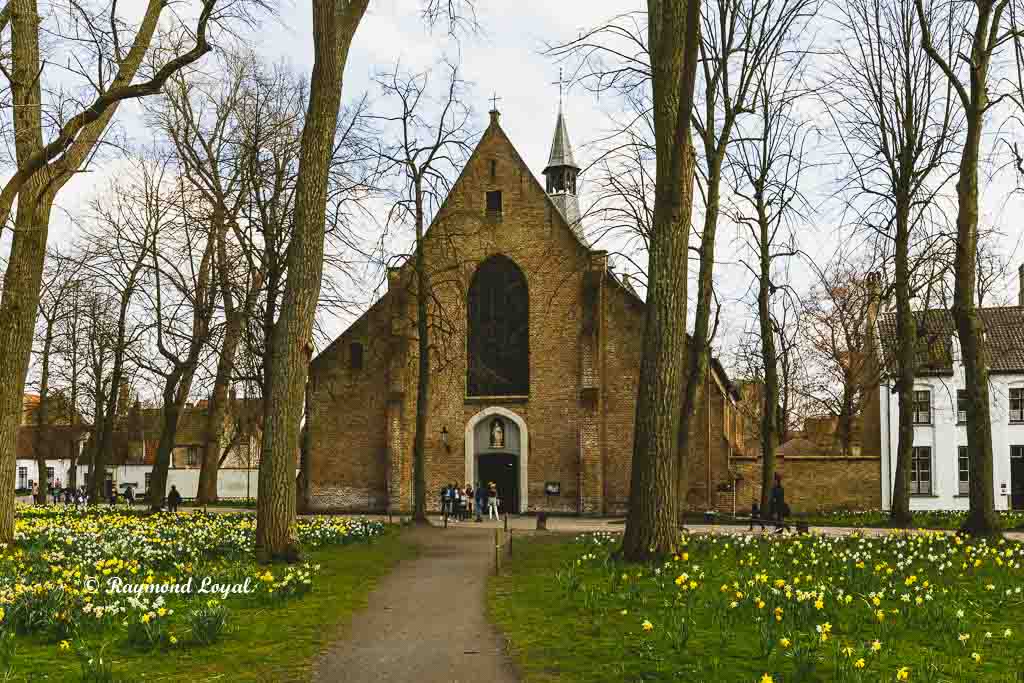A Walkabout in Bruges
Some Facts about Bruges
The City of Bruges is situated in the European country of Belgium. Bruges is the largest city and the capital of the Belgium province of Flanders. Flanders belongs to the Flemish region in Belgium and borders on The Netherlands in the West and has coastal strip at the Channel. The ocean port of Bruges is Zeebrugge. A channel links the ocean port Zeebrugge with Bruges, which is situated further into the inland.
According to official data there are about 118,000 residents living in Bruges in 2019. Bruges is a diocesan town. Bruges itself is a picturesque town where still parts of the old ramparts mark the limits of the historic city. Some of the old gates are still standing. At some points windmills are part of the ramparts. Canals are crossing the old town and give the city its distinctive appearance.
The city is full of patrician houses, bridges, canals, a huge number of churches with the huge Belfried towering over the entire city. The Belfried is the most prominent building of the entire city. Having said that, one can really conclude that Bruges is, in its core, a medieval city in modern times. Having been there, I can say, there is nothing else to say but be there open your eyes and fathom the esprit of this city.
Because Bruges never saw any destruction during the wars, the old town is still widely preserved. Because of the historic town so well preserved Bruges has become an UNESCO world heritage site.
What are the most interesting sites in Bruges?
From the author's point of view there are a couple of sights that are really interesting and worth visiting:
- The Belfried of Bruges
- Cloth Hall
- Castle Square and Town Hall
- The Rosary Quay
- Sint-Salvator Cathedral
- Church of Our Lady
- Holy Blood Basilica
- St. James's Church - Sint-Jakobskerk
- Carmelite Abbey - Karmeliterkerk
- City Gates of Bruges
- Ezelpoort of Bruges
- Smedenpoort of Bruges
- The Beguines Convent in Bruges
- The Sint John Hospital
- Minne Water Park
- Brewery "De Halve Maan"
- Chocolade Museum
- De Friet Museum (Chips Museum)
- Chips and Sauce with Onions
- The Diamond Museum
Bruges is proud of its Christmas Market which is held during the Advent season.
Part of the sights are captured and shown on this site. Hopefully you will find it interesting enough to plan you own trip to Bruges soon.
Brugge in Flanders / Belgium is a lovely spot which should have been visited at least once in a lifetime. The old city centre is very much full of history and the visitor can sample much of the old times which are manifested in great architecture.
To the visitor the city centre comes across as very historic and still you are in a modern city with modern people. The city centre shows how the old buildings stand beside modern newly constructed buildings in harmony.
Wandering about in Brugge is really an experience and you really need to go there to get a good feeling for the city.
Yes, the centre is full of tourists but the tourists, especially around the main church and, of course, on the market place. But who cares? Brugge is a pulsating place driven by its own people.
Below you will find some images showing parts of the Grand Market, which is full of restaurants and bistros / brasseries and chippies to have a meal and a drink.
The Belfried of Bruges
The Belfried of Bruges is the most prominent building of the entire city and is 83 metres high. The tower is part of the cloth halls and sits at the western End of the market square. Cloth halls and the Belfried were both built as one ensemble and completed some time after 1240 which is seen as the year when construction started.
Initially the tower top was a wooden construction which thrice, in 1280, 1493 and 1741, fell victim to fire. In order to prevent damages by fire the tower top was restored and 1822 a stone parapet was built.

The Belfried is the most prominent building in the old part of Brugge. Wherever you go, the tower is present. The tower is part of the merchant's hall of Brugge and is not the town hall, which lies across the market place and is not quite as impressive as the Belfried.
The pic on the left was taken with an EOS 6D using an EF 17 mm TSE lense. Any other lense would have failed to do the job.
The dimensions of the Belfried are such that special photographic equipment is necessary to capture the tower which having to tilt the table / the camera.
Bruges' Grand Market
Saint James's Church - Sint Jakobskerk
Is one of the catholic churches in the diocesan town of Bruges. The church was originally built in the 13th century and completed around 1240. A first expansion of the church was executed in 1459 because the then wealth of the city required the church to match the city's status.
More reconstruction at the church took place in the late 17th century and a last time in the early 18th century, when the church received its final and present style. With the last expansion and reconstruction the church was transformed into a baroque church, though this is only visible to the visitor entering the church.
Chips with sauce and onions
Bruges' Beguine Convent
Ezelpoort Bruges
The Ezelpoort is one of the remaining gates of the historic ramparts of the city.
Smedenpoort Bruges
The Smedenpoort is the second remaining gate of the historic ramparts of the city.
Sint Salvator Cathedral Bruges
With the Sint Salvator Cathedral we have church erected in an Early Gothic style, built between 1183 and 1223, during a period when France's great Gothic cathedrals were also built.
Despite the church being built in an Early Gothic style, the church itself was only elevated to the rank of "cathedral" in 1834. Sint Salvator Cathedral fell victim a fire in 1358 which hugely damaged the building which led to a substantial restauration.
Between 1482 and 1527 another constructon phase resulted in substantial extension to the choir with additional five choir chapels and a vaulting of the ambulatory.
Another building phase in the 19th century saw work on the Western Tower and a rebuilding of the chancel screen (= The chancel screen is an ornate partition between the nave and the chancel. The chancel being the room dedicated to priests and monks, whereas the nave is room where layman congregate).
The cathedral's interior style is late baroque. The visitor comes into a vast and high room. Walls and roof are white and the entire interior comes across as very light and friendly. On a sunny day, there is light inside the cathedral wherever you cast your eye.
Bruges Historic Centre
A bit of Art
Bruges Old Town
The city is so interesting that many people go there to see it. Tourists wander through the city and can book yourself a boot tour on the city's canals, which is quite an experience, good weather provided. The boat trips show the city from a different perspective. The Tarifs are reasonable and can be seen at the ticket desks. There are a couple of operators but they all have the same rates. So don't worry just hop on the carriage and enjoy the ride through the city.




































































Kommentar schreiben